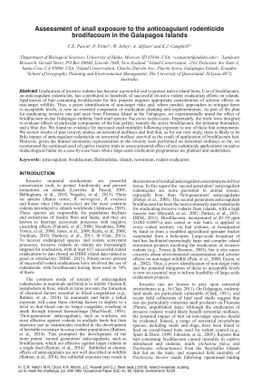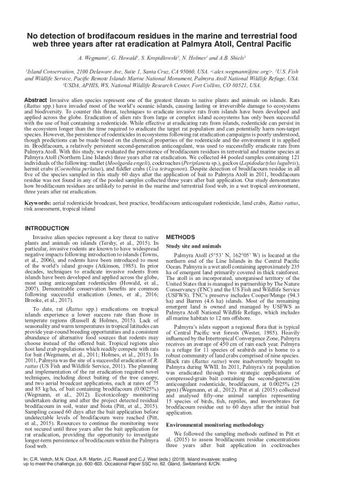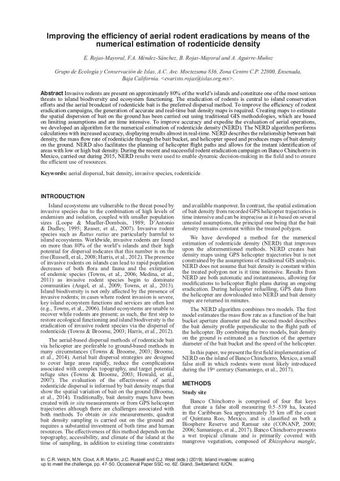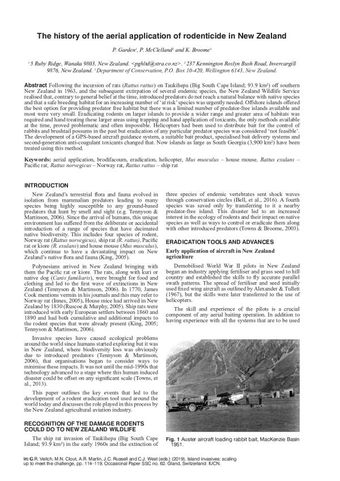Assessment of snail exposure to the anticoagulant rodenticide brodifacoum in the Galapagos Islands
- Description:
- Eradication of invasive rodents has become a powerful tool to protect native island biota. Use of brodifacoum, an anticoagulant rodenticide, has contributed to hundreds of successful invasive rodent eradication e?orts on islands. Application of bait containing brodifacoum for this purpose requires appropriate consideration of adverse e?ects on non-target wildlife. Thus, a priori identi?cation of non-target risks and, where needed, approaches to mitigate these to acceptable levels, is now an essential component of eradication planning and implementation. As part of the plan for eradicating invasive rats and mice from Floreana Island in the Galapagos, we experimentally tested the e?ect of brodifacoum on the Galapagos endemic land snail species Naesiotus unifasciatus. Importantly, the trials were designed to evaluate e?ects of particular components of the bait pellets, namely the active brodifacoum, the pyranine biomarker, and a blue dye. We found no evidence for increased snail mortality following exposure to any of these bait components. We review results of past toxicity studies on terrestrial molluscs and ?nd that, as for our own study, there is likely to be little impact of anticoagulant rodenticide on terrestrial mollusc survival as the result of application of brodifacoum bait. However, given the limited taxonomic representation in the toxicity tests performed on terrestrial molluscs so far, we recommend the continued used of captive toxicity trials to assess potential e?ect of any rodenticide applications on native malacological fauna on a case-by-case basis where large-scale eradication programmes are planned and undertaken.
- Display date:
- 2019
- Collections:
- Secretariat of the Pacific Regional Environment Programme (SPREP)
- Publisher:
- International Union for Nature Conservation (IUCN)
- Content partner:
- Secretariat of the Pacific Regional Environment Programme (SPREP)
- Availability:
- Not specified
-
Copyright status: All rights reservedFind out more about what you are able to do with this itemThis item is all rights reserved, with means you'll have to get permission from Secretariat of the Pacific Regional Environment Programme (SPREP) before using it. For more information, please see our use and reuse page.What can I do with this item?Non-infringing useNZ copyright law does not prevent every use of a copyright work, and this item may be hosted by an international institute or organisation. You should consider what you can and cannot do with a copyright work.No sharingYou may not copy and/or share this item with others without further permission. This includes posting it on your blog, using it in a presentation, or any other public use.No modifyingYou are not allowed to adapt or remix this item into any other works.No commercial useYou may not use this item commercially.
Related items
Welcome and warm Pasifik greetings
The information on this site has been gathered from our content partners.
The names, terms, and labels that we present on the site may contain images or voices of deceased persons and may also reflect the bias, norms, and perspective of the period of time in which they were created. We accept that these may not be appropriate today.
If you have any concerns or questions about an item, please contact us.



